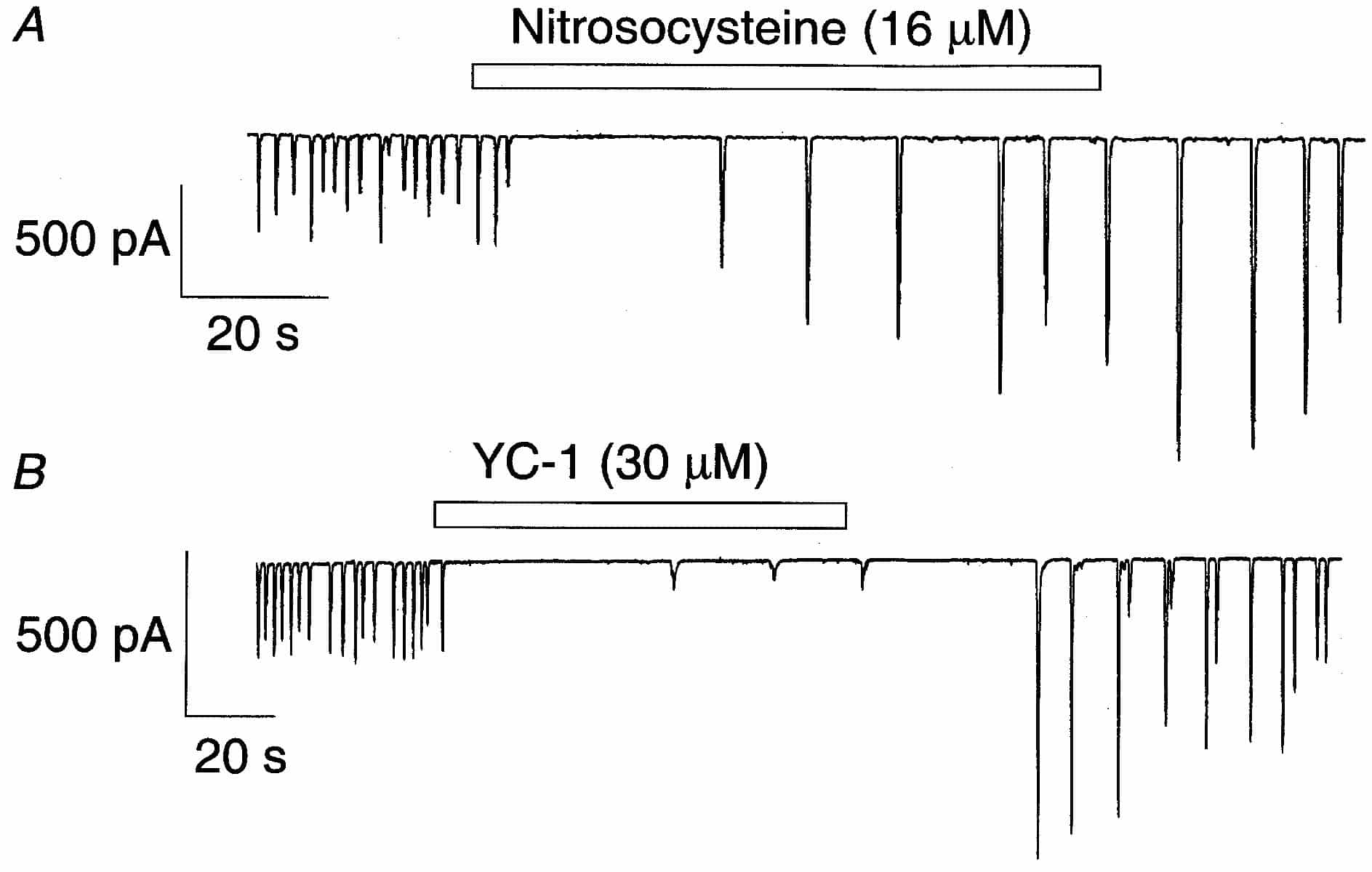Penile erection results from the relaxation of the corpus cavernosum smooth muscle. A wealth of work has established the role of the nitric oxide (NO)/cyclic GMP (cGMP) pathway in mediating the relaxation (Andersson, 2001). Despite the success of this line of research, the mechanisms by which NO/cGMP causes relaxation of the corpus cavernosum are incompletely understood and the intracellular targets of cGMP only partly known (Andersson, 2001). Two recent studies have described spontaneous Ca2+-activated Cl– currents (STICs) in the corpus cavernosum and suggested that these may be involved in the generation of tone in the detumescent state (Karkanis et al. 2003; Craven et al. 2003). The purpose of the present study, therefore, was to examine the effect of the rapidly degrading NO donor L-nitrosocysteine and the soluble guanylate cyclase activator YC-1 (3-(5â-hydroxymethyl-2â-furyl)-1-benzyl indazole) on STICs.
Male rabbits were humanely killed with pentobarbitone (I.V.) and cells were freshly dispersed from the corpus cavernosum for study using the amphotericin B perforated patch technique. Patch pipettes contained caesium to block potassium currents. More than 80 % of the corpus cells generated spontaneous transient inward current (STICs) when held at -60 mV.
The effect of L-nitrosocysteine (initial concentration in superfusate was 16 µM; dead space time 15 s) is shown in Fig 1A. This inhibited STICs for approximately 25 s, after which they returned with greater amplitude and slower frequency before the drug was washed out. These effects were confirmed in five cells, where STICs in the control period had a mean frequency of 14.4 ± 3.2 s-1, and amplitude of -175 ± 77 pA (data are given as means ± S.E.M.). These values both fell to zero for at least 20 s in the presence of L-nitrosocysteine (P < 0.05, Student’s paired t test). YC-1 (30 µM) also inhibited STICs and on washout they returned with reduced frequency and increased amplitude (Fig. 1B). Similar results were obtained in 5 cells, when the frequency and amplitude of the STICs were reduced from 10 ± 4.3 to 3.2 ± 1.6 s-1 and from -292 ± 84 to 81 ± 17 pA, respectively (P < 0.05).
These results suggest that nitric oxide, acting through cGMP can inhibit STICs in corpus cavernosum cells. This may provide one mechanism whereby this pathway causes relaxation of these cells.
M.C. was supported by a Department of Education and Learning research studentship.

